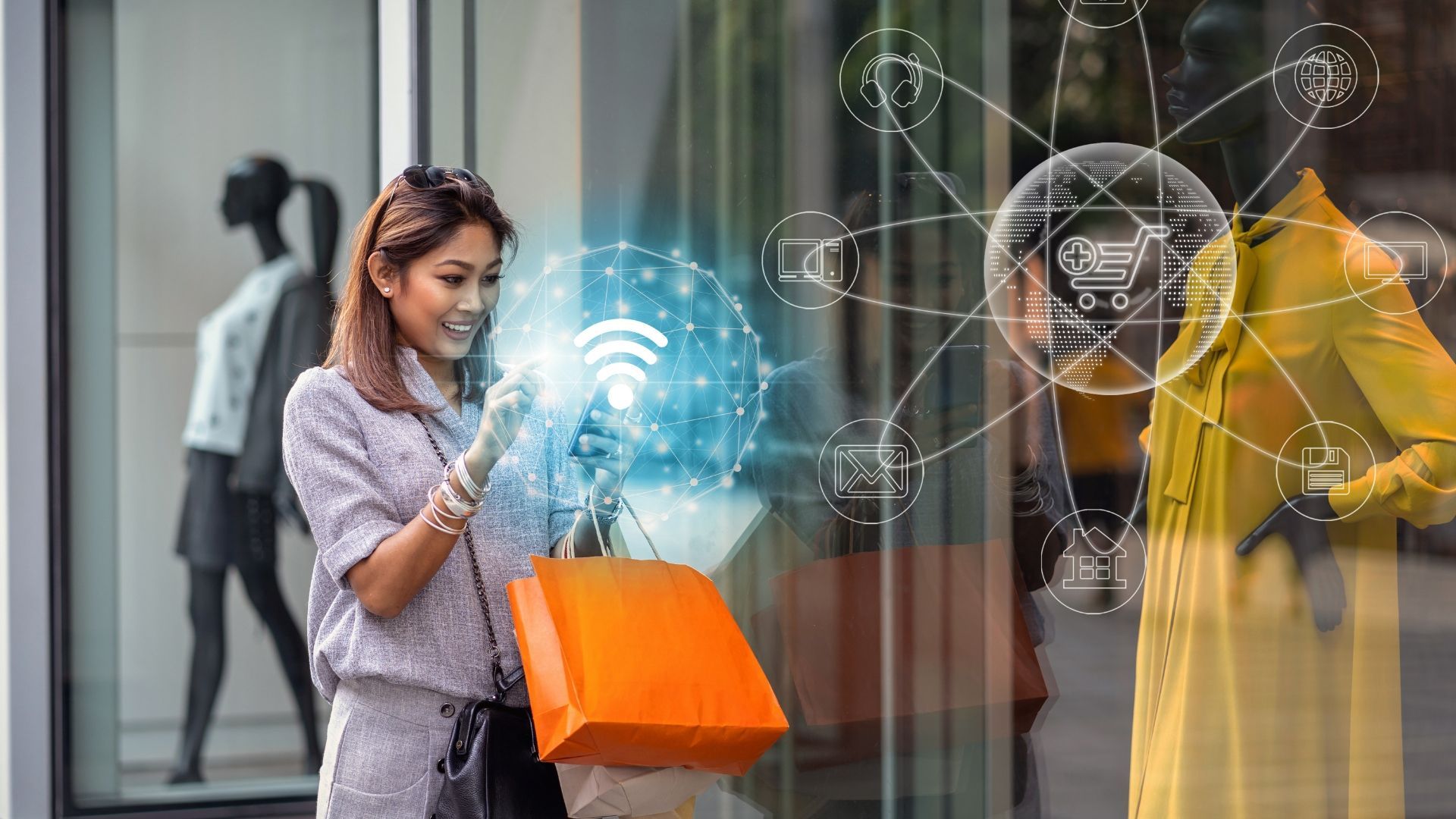Insights
Discover our insights on the most recent advancements in business and technology

Running a successful business requires ensuring your customers are happy, making them come back for more. A loyal customer base is a solid indicator of a thriving business. Realising this, though, can be difficult as customers are unpredictable. And their expectations have risen to new heights in this day and age. Customer retention statistics provide valuable insights into customer expectations, preferences, and behaviour, shedding light on the factors that consistently retain customers and those that might drive them away. In this article, we will share 50 customer retention statistics you need to know this 2024. General Customer Retention Statistics Forbes : According to the book Marketing Metrics, businesses have a 60 to 70% chance of selling to an existing customer while the probability of selling to a new prospect is only 5% to 20%. According to Zendesk , nearly 75% of consumers express loyalty to a specific brand or company. Yotpo found that 37% of consumers consider themselves to be loyal to a brand only after making five purchases. In a joint report by Manta and BIA/Kelse y , they found that repeat customers spend 67% more than new customers. Zendesk Customer Experience Trends Report 2020 concludes that about 75% of consumers are loyal to a specific brand or company. According to Invesp , 40% of companies prioritize both customer retention and acquisition equally. According to a Yotpo survey, more than 55% of customers remain loyal to brands primarily because of the product. Around 52% of customers have made an extra effort to purchase from their favourite brand. Zendesk According to Customer Gauge , up to 44% of businesses fail to calculate their retention rate. From Subscription Flow , 78% of consumers prioritize fair prices when selecting a company to engage with, ranking it as the most crucial factor after good customer service and quality products. Customer Loyalty Statistics 60% of consumers between the ages of 18-24 express a preference for point-based loyalty schemes. Additionally, 20% state that they would cease shopping from specific brands if those brands were to discontinue their loyalty schemes. Deloitte According to a McKinsey survey on loyalty programs, individuals in paid loyalty programs are 60% more likely to increase their spending on the brand after subscribing, whereas free loyalty programs only boost this likelihood by 30%. Gartner reports that if customers find value in a service interaction, there is an 82% likelihood of repurchase or renewal when allowed to switch brands. Deloitte reveals that 54% of loyalty programs provide member benefits that are non-transactional. According to Salesforce , 62% of customers report feeling an emotional connection to the brands they choose to buy. According to Entrepreneur , gamification in loyalty programs for email marketing can increase customer lifetime value by 48% and boost the conversion rate by 15%. Oracle reports that 70% of customers who feel emotionally connected to a brand end up spending at least twice as much, in contrast to 49% of customers with lower emotional engagement. As per CommerceTools , millennials (ages 35-44) are the most inclined (71%) to adopt loyalty programs for saving money, while consumers aged 55 and above are the least likely to utilize their rewards accounts. According to Statista , the global market size for loyalty management reached $5.57 billion in 2023. Fortune Business Insights predicts that the global loyalty management market is expected to reach $28.65 billion by 2030. On Personalisation and Consumer Data McKinsey reports that 78% of customers are inclined to repurchase from a company that tailors their experience. According to Deloitte , 22% of consumers are willing to share certain data in exchange for a more personalized customer service or product. Bloomreach reveals that 73% of B2B buyers desire personalized experiences akin to B2C customer experiences. However, only 22% of B2B customers state that their latest online experience was entirely personalized for them. According to McKinsey , 71% of consumers anticipate personalized interactions with companies. Forrester reports that merely 17% of privacy decision-makers indicate that their organization's privacy team possesses marketing competencies or skills. On Customer Service and Experience About 58% of consumers emphasize the significance of customer service in their loyalty to a brand. Microsoft Zendesk reveals that close to 70% of customers find it frustrating when their call is transferred between departments. As per Salesforce , more than 90% of consumers believe that a positive customer service experience increases their likelihood of making another purchase. In 2021, 58% of customers expressed that their expectations for customer service were higher than they were in 2020, according to Talkdesk . According to Redpoint Global's report, over half of consumers (55%) feel unseen, and nearly half (48%) feel undervalued by the brands they interact with. According to McKinsey , customers tend to spend between 20% and 40% more with brands that promptly respond to customer service requests on social media. According to the Temkin Group , companies with a yearly revenue of $1 billion, on average, can anticipate an additional $700 million in earnings within three years of investing in customer experience. Esteban Kolsky reports that 72% of customers are likely to share a positive experience with six or more people. Conversely, when customers are dissatisfied, 13% of them may share their negative experience with 15 or more individuals. The difficulty arises because, in many instances, customers don't explicitly express their discontent. Surprisingly, only 1 in 26 unhappy customers actually voices their complaint. The majority simply choose to discontinue doing business with you. Around 50% of customers would switch to a competitor after one bad experience, and this increases to 80% if they have more than one bad experience, according to Zendesk . Approximately 74% of consumers are inclined to change brands following a negative call centre experience, as indicated by CallMiner . According to HubSpot , 75% of customer service leaders consider Customer Satisfaction to be the most crucial Key Performance Indicator (KPI). Only 20% of consumers would consider doing repeat business with a brand that received a "very poor" rating, as indicated by an insight report from Qualtrics . According to Klarna , making it difficult for customers to return products can result in losing 84% of your shoppers. Customers can be unforgiving. While 81% express a willingness to make another purchase after a positive shopping experience, 61% indicate they would switch to a competitor after just one poor experience. Zendesk In a PwC survey, 75% of respondents mentioned that they consistently prefer to interact with a human rather than a bot.

In today's digital age, businesses need to stay agile, competitive, and efficient. Traditional on-premises IT infrastructure may no longer meet the demands of modern businesses. Cloud computing has emerged as a game-changer, providing scalable, flexible, and cost-effective solutions to businesses of all sizes. As a leading IT consulting firm, Infotech Consultancy has helped numerous businesses transition to the cloud and unlock a world of opportunities. In this article, we will explore the top 5 reasons why you should move your business to the cloud, backed by real statistics and verified sources.

The way that companies connect with their customers is being completely transformed by automation and AI technology, one of which is Salesforce Einstein, a cutting-edge AI platform. Businesses can take advantage of a wide range of tools on this platform that is intended to enhance customer service and boost sales results. Companies that use Salesforce Einstein are better able to optimise their operations, maximise their productivity, and enhance customer satisfaction, all of which contribute to higher revenue and business expansion. At Infotech Consultancy, we understand the importance of providing businesses with innovative solutions that help them stay ahead of the competition. That's why we are proud to offer Salesforce Einstein to our clients. Our team of experts can help you implement this powerful technology into your business, allowing you to enjoy its many benefits.


